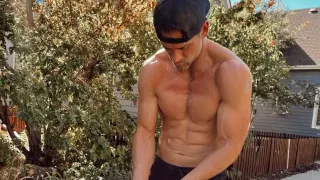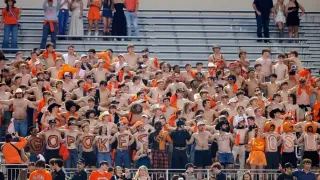
4 hours ago
The Queer Movie Revival: Viral Rediscovery of Camp Classics and Cult Masterpieces
READ TIME: 3 MIN.
On TikTok, Instagram, and Twitter, clips from queer cult classics of the late 20th and early 21st centuries are racking up millions of views. Scenes from"But I’m a Cheerleader" (1999),"Velvet Goldmine" (1998), and"Jennifer’s Body" (2009) circulate with new edits, memes, and impassioned commentary, reaching audiences who may never have seen these films in their original release. While Hollywood’s focus on profits and ratings has led to a measurable decrease in LGBTQ+ representation in major studio releases—GLAAD reported a 4.9% drop in queer characters in 2024 and 2025 compared to previous years—queer movie lovers are looking backward to find the stories and aesthetics they crave.
The renewed popularity of 90s and 2000s queer films is not just nostalgia—it’s a response to a fraught media landscape. In the U.S. alone, 588 anti-LGBTQ+ bills have been introduced as of June 2025, intensifying anxieties about visibility and erasure. Mainstream studios, facing political and market pressures, often hesitate to greenlight queer-centered stories or cast openly LGBTQ+ actors, leaving fewer new titles for audiences hungry for complex representation.
For queer viewers, revisiting older films is a way to reclaim agency and visibility. Movies like"But I’m a Cheerleader"—with its stylized camp, biting satire of conversion therapy, and unapologetic lesbian romance—continue to offer solace and defiance. Their viral popularity reflects a collective desire to see joyful, subversive, and affirming queer narratives, especially as current releases skew toward caution or erasure.
Social media platforms have become the new theaters for queer movie fandom. Gen Z and millennial users remix iconic scenes, share personal reactions, and create viral trends around films that may have been marginalized or misunderstood at their debut. For example, the sapphic kiss between Megan and Graham in"But I’m a Cheerleader" is now a staple in TikTok compilations celebrating lesbian visibility, while the glam-rock performances and gender-bending style of"Velvet Goldmine" spark conversations about queer history and aesthetics.
This digital revival is more than fandom—it’s resistance. As legal and social threats to LGBTQ+ rights escalate, queer audiences use these films to build community and affirm identity. GLAAD’s research shows that seeing characters like oneself onscreen helps queer youth cope with minority stress, providing models for resilience and self-acceptance. At the same time, reductive or stereotypical portrayals can reinforce stigma, making the rediscovery of nuanced, campy, and defiant classics all the more vital.
"But I’m a Cheerleader," directed by Jamie Babbit, was controversial at the time for its explicit lesbian storyline and satirical take on conversion therapy. Banned or heavily censored in multiple countries upon release, it has been reclaimed as a touchstone for queer joy and resistance, with recent screenings selling out at LGBTQ+ film festivals.
"Velvet Goldmine," Todd Haynes’s glam-rock epic, was misunderstood by mainstream critics in 1998 but has become a cult favorite for its exploration of bisexuality, gender fluidity, and queer musical history. Viral edits of Jonathan Rhys Meyers’s and Ewan McGregor’s performances on TikTok have introduced a new generation to the film’s radical aesthetics and themes.
"Jennifer’s Body," once marketed to straight male audiences, is now hailed by queer and feminist critics for its subversive portrayal of female desire and its critique of misogyny. The film’s resurgence on social media platforms has prompted reappraisal and academic analysis, affirming its status as a queer horror classic.
LGBTQ+ film festivals like BFI Flare and Outfest have responded to fan demand by programming retrospectives of these cult films, often with panels featuring directors, actors, and scholars discussing the movies’ impact and legacy. Streaming services have also played a crucial role in making older queer cinema accessible, curating collections for Pride Month and collaborating with influencers to promote classic titles.
The 20th anniversary re-release of"Brokeback Mountain" in theaters this summer demonstrates the commercial viability of retro queer hits. As audiences flock to see the film on the big screen, media coverage has highlighted both the progress and setbacks in LGBTQ+ rights since its original release. This kind of mainstream attention helps counter industry reluctance, sending a message that queer stories remain vital and profitable.
The viral rediscovery of camp and cult classics is not merely an exercise in nostalgia. It is an assertion of queer cultural power, a statement that stories deemed marginal or controversial in their time are now central to community, identity, and resistance. As censorship and industry caution threaten new queer film projects, the power of viral fandom, festival programming, and streaming access keeps these masterpieces alive.
For creators and audiences alike, the lesson is clear: demand for diverse, joyful, and complex queer stories remains strong. By celebrating and reviving camp classics and cult favorites, queer audiences are shaping the future of cinematic representation, one viral clip at a time.






